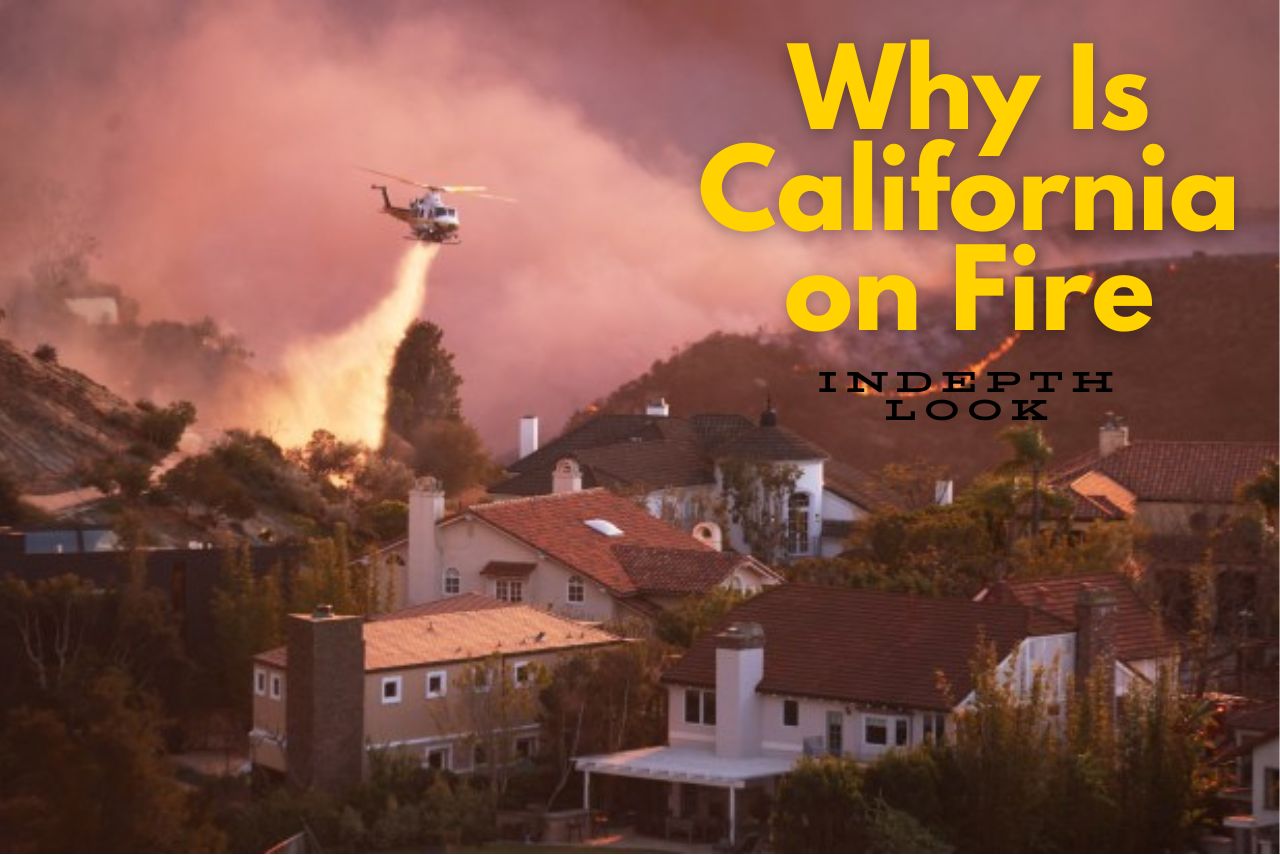
California on Fire
Why Is California on Fire? An In-Depth Look into the California Wildfires of 2025
California’s devastating wildfires are among the most destructive and well-documented natural disasters in the United States.
Fires across California affecting areas like Los Angeles, the Palisades, and other parts of the state have brought devastation to landscapes, property, and lives.
With key phrases like “Why is California on fire?” trending, many are left wondering about the root causes of these blazes. Here’s an exploration into the factors, history, and consequences of wildfires in California, including the major fire events of 2025.
Why Is California Always on Fire?
California experiences wildfires frequently due to a combination of natural and human-made factors. The state’s Mediterranean climate is a significant contributor. Summers are long, hot, and dry, while the wet winters encourage the growth of vegetation. When dry seasons arrive, this vegetation becomes prime fuel for wildfires.
Additionally, global warming exacerbates conditions by increasing temperatures and reducing humidity levels, leading to drier landscapes. These shifts create an ideal environment for fires to ignite and spread rapidly. Regions like Los Angeles and the Palisades, often highlighted in searches like “why is LA on fire?” or “fire Los Angeles,” are particularly susceptible because of their combination of urban areas and sprawling vegetation.
California Fires: Key Causes
Several natural and human-induced causes ignite California’s fires:
- Lightning Strikes: One of nature’s primary fire-starters, lightning strikes can spark blazes in remote, forested areas.
- Wind Patterns: Strong winds, particularly the Santa Ana winds, carry flames across vast areas at alarming speeds.
- Human Activity: Negligence such as unattended campfires, fireworks, or arson significantly contributes to California wildfires. Some high-profile incidents have led to investigations into “who started the fires in Los Angeles” or other cities.
In 2025, a key question arises “What caused the fire in California this year?” as people seek clarity about the specific triggers behind these destructive events.
What Happened to Los Angeles Fire Events in 2025?
Los Angeles (LA), a metropolitan hub within California, is no stranger to fire outbreaks. In 2025, fires swept through regions like the Palisades, raising the question, “What is the reason for fire in LA?” According to reports, a combination of high temperatures, drought conditions, and Santa Ana winds made the fires in Los Angeles particularly severe this year.
The Palisades fire, a significant event in 2025, garnered attention under queries like “what started the Palisades fire in California.” While investigators are still examining potential human causes, dry vegetation and relentless winds have been major contributors.
The Role of Climate Change in California Wildfires
Wildfires in California are exacerbated by climate change. As temperatures rise globally, so do the chances of prolonged heatwaves and drought conditions. Diminishing water supplies contribute to parched forests, increasing their flammability.
California’s wildfires are particularly notable on fire maps, often linked with searches such as “fire map California,” “California map,” and “fire map.” These resources provide real-time updates on fire movements, evacuation orders, and recovery efforts.
Why Does California Catch on Fire So Frequently?
California’s geography, climate, and vegetation combine to create a volatile mix that encourages wildfires. The state is located on the Pacific Coast and spans a wide range of ecosystems. Searches like “where is California found?” and “California wildfires” often lead people to learn about how these geographic factors contribute to fire risks.
Southern California, home to Los Angeles, is particularly prone to wildfires due to the arid environment and rapid urbanization, which often leads to a clash between human structures and natural fire-prone areas.
Impact of 2025 Fires on Wildlife and Infrastructure
The 2025 wildfires have devastated communities, wildlife, and infrastructure across California. Questions about the fires’ impact often come in the form of trending phrases such as “former child star dies in California fires” or “what happened to Los Angeles fire?” Events like these emphasize the human toll, while extensive damage to forests and ecosystems highlights environmental losses.
Iconic corporations like the Walt Disney Company have also been affected, with reports of business interruptions shocking many and fueling interest in searches like “Walt Disney Company shocks world after California fires.”
Fire Prevention and Preparedness
California authorities are continually improving fire prevention efforts. Residents are encouraged to maintain defensible spaces around properties, implement fire-resistant landscaping, and stay informed through fire maps and alerts.
Emergency services and organizations also focus on preparedness by providing fire education and response training. The importance of fire safety, evacuation planning, and quick access to resources cannot be overstated as residents often deal with the uncertainty of queries like “is LA in California?” when looking for up-to-date information.
Final Thoughts
The question “Why is California on fire?” carries complex answers rooted in a blend of natural factors and human influence. From geography and climate to negligence and accidents, California faces a persistent threat from wildfires. As fires like the Palisades blaze of 2025 show, understanding their causes, effects, and prevention strategies is critical for protecting lives and preserving California’s unique landscapes.
For real-time updates and more detailed information on fire locations, fire maps such as “fire map California” remain invaluable tools. Additionally, the ongoing battle against wildfires demands attention to climate change, improved urban planning, and collective action to minimize risks.





